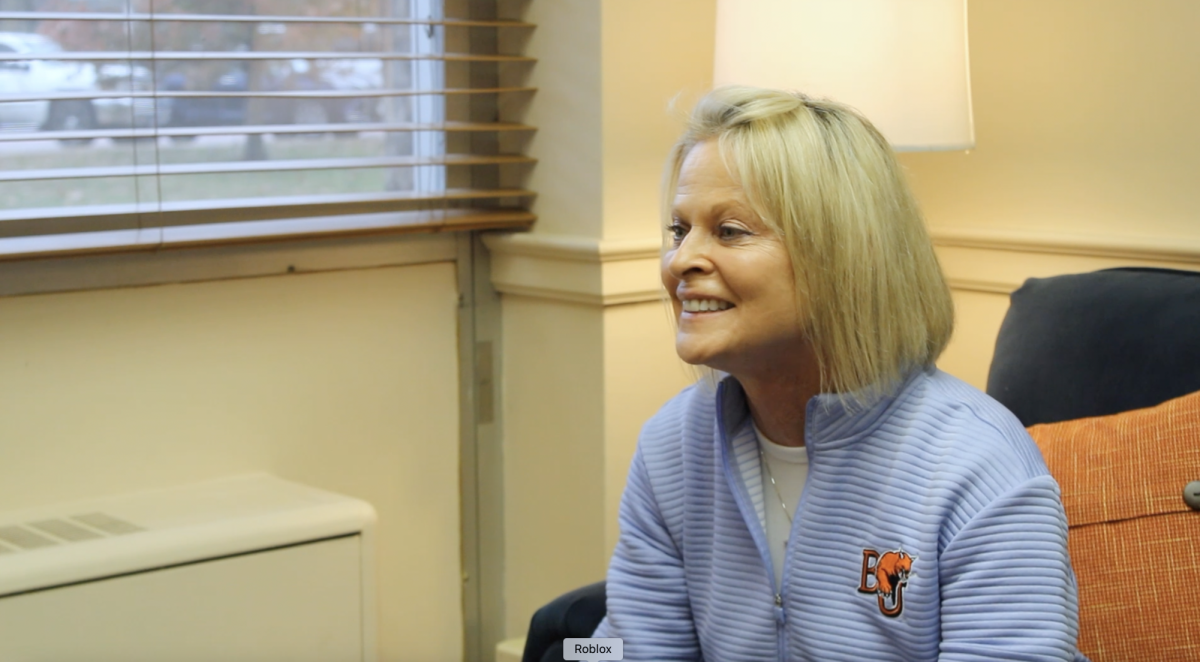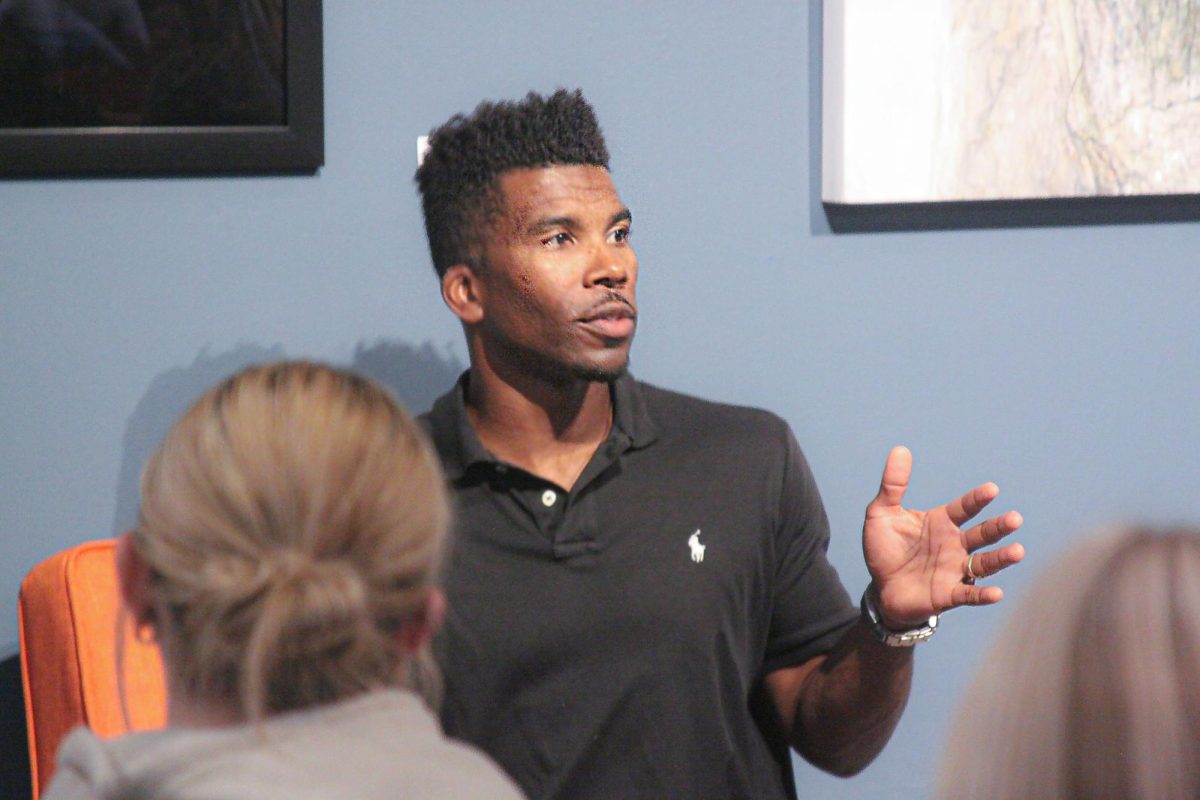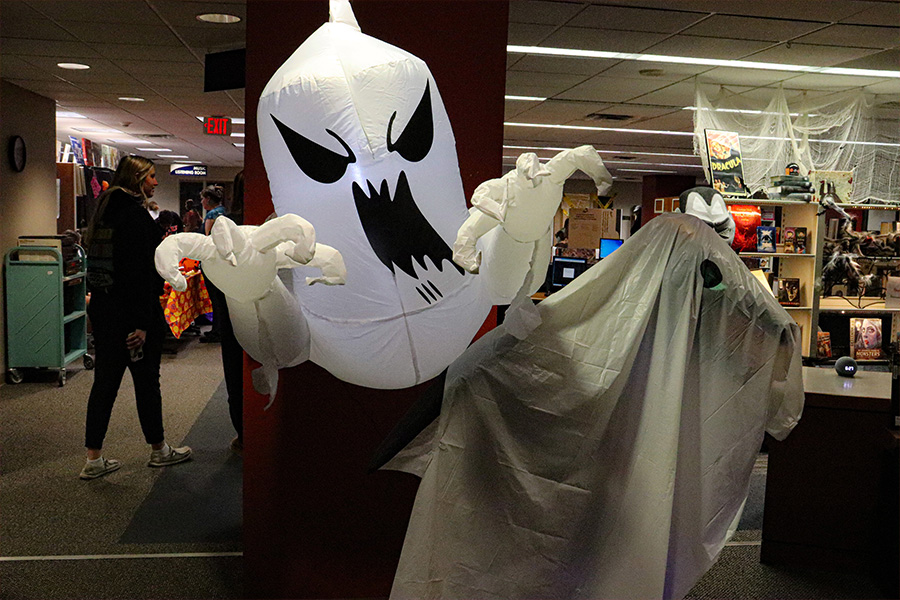Baker University administrators are taking steps to increase enrollment numbers after seeing a decline in full-time degree seeking students over the past three years.
”We must grow our enrollment,” University President Pat Long said at the State of the University Address Feb. 12 in Rice Auditorium. “I’ve said that before and I’ll continue saying it again. For our financial viability at Baker, enrollment is key. And quite frankly right now, we are not doing that well.”
In the spring of 2010, there were 819 full-time students on the Baldwin City campus. In spring 2011, that number decreased to 782. Spring of 2012 saw 763 students and according to the 20th day totals, there are 725 students for the spring of 2013.
“Enrollment numbers have gone up and down and up and down,” Director of Enrollment Management Kevin Kropf said. “We haven’t been down like this for a while, but again I think when you look at demographics and the economy, maybe we shouldn’t be surprised that we’re having some of this decline.”
The Baker 2020 Strategic Goals outline enrollment targets with a goal of exceeding 1,000 students for full-time enrollment.
Kropf said ideally, the university needs to bring in at least 220 new students each fall to reach that number. However, since 2009, it has been closer to around 200.
Several factors weigh into the decline in enrollment, the main two being the economy and demographics.
”The number of high school graduates in the state of Kansas has been declining for the last couple of years,” Kropf said. “Since our primary market is Kansas, I think that’s part of it.”
According to the Western Interstate Commission for Higher Education, the number of high school graduates from public and non-public schools in the Midwest has been steadily decreasing for the past four years, and it is projected that the number will continue to decrease each year all the way up to at least the year 2027-28.
Senior Brittany Vollenweider said she also believes the economy is playing into the decline in enrollment.
”I think … (the ability) to receive financial aid is going down, and people can only charge so much loans,” Vollenweider said. “So if you can’t have scholarships keeping up with being able to borrow money, people can’t afford to go to school.”
The Office of Admissions has implemented a plan in order to drive Baker’s enrollment numbers back up to where they have been in the past and where they should be in the future. These plans include targeting messaging to interested prospective students and enhancing and customizing the visitor experience.
“We’ve really enhanced our campus visit experience. Denious (Hall) has been a great gift for what we’re trying to do,” Kropf said. “Parmenter (Hall) was historic and really kind of had a sense of history to it, but 17 and 18-year-olds aren’t always into historic. They want something that’s inviting, (and) high-tech.”
One point to be made about the decreasing enrollment numbers is the fact that most of the athletic teams are staying at full capacity. Therefore, it is the number of non-athletes that is on the decline.
”A lot of our efforts are focused on recruiting students who aren’t being recruited for athletics,” Kropf said. “Our coaches do a great job and across the board our rosters are pretty much full. … We need to find things for students who aren’t athletes and really find things for them to get them connected in other ways.”
Ways the Office of Admissions is trying to attract high schoolers to Baker include scholarship competitions, customized visit days such as Celebrating Science Day, new buildings such as the Ivan L. Boyd Center for Collaborative Science Education, the honors program and emphasis on individual academic departments.
”When we can engage the music faculty and the art faculty and the theater folks, and we can engage the people for an honors program … those are things that allow us to connect even better with the non-athletes,” Kropf said. “New programs, new buildings, new populations, those are the things that are going to allow us to really increase our enrollment to a higher level.”
Long said Brian Posler, executive vice president of academic affairs and dean of the college of arts and sciences, has helped bring Baker “to another level of expertise” in expanding the university’s programs.
”I cannot stress enough how important it is going to be in this coming year that we develop programs, that we all work together for enrollment and retention and we make this enrollment trend that we’re on start on an upward swing,” Long said.
Although the decline has raised concern and brought about a significant effort for change, the situation isn’t viewed as a “crisis” just yet.
”I don’t think it’s a crisis. I think it’ll be a crisis if we’re looking at 150 freshmen students enrolling,” Kropf said. “Are we in an ideal place with enrollment? No. But I think we’ve put in place the necessary steps we need to grow back to where Baker should be enrollment-wise.”








